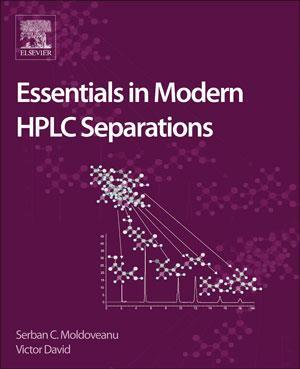Serban C Moldoveanu and Victor David
Elsevier
2013 | 532pp | £95
ISBN 9780123850133
Reviewed by Tom McCreedy
http://rsc.li/CW_091305
This book sets out to deliver practical guidance to users of high performance liquid chromatography (HPLC) and to provide criteria for method selection. The first 50 pages could be considered a basic introduction to HPLC, covering various aspects of practice and instrumentation. This section alone would be very useful to the novice and could be a text on its own. The eight subsequent chapters cover topics in far greater detail, such as theory, retention mechanisms, stationary and mobile phases; importantly, the solute is not neglected in the discussion of these topics.There are numerous figures and tables, all providing useful information in a clear style, but they are not intrusive to the overall flow of the book. Each chapter is supported by relevant references to journals, allowing the reader to delve further into specific topics if they choose.
I really liked the style of the book, which is organised by topic rather than individual techniques. For example, retention mechanisms in different HPLC types are covered in one chapter, rather than treating the retention mechanism for ion chromatography in a chapter about ion chromatography and the retention mechanism for reversed phase HPLC in another.
My only minor criticism is that I would have liked to have seen more on method development. While I appreciate any treatment of this area has to be quite general, it is a topic often omitted completely from books or subjected to a rather limited treatment, as in this case. That does not detract from the value of the book as a whole and my personal opinion is that this book is a very valuable and timely text on a chromatographic technique that is continuing to develop and remains critical to analytical measurements across the world.
Purchase Essentials in modern HPLC separations from Amazon.co.uk













No comments yet